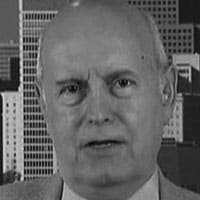Thousands of U.S. judges who broke laws or oaths remained on the bench
…from Reuters
by MICHAEL BERENS and JOHN SHIFFMAN in MONTGOMERY, ALABAMA
[ Editor’s Note: VT has a deep bench, but we are not able to field a small army of reporters to dig into a big story like this. It reminds of the old days, in my 20’s and 30’s, where any of the big newspapers could fund major investigations like this. That has pretty much gone bye-bye.
So I was surprised to get a request for Reuters asking us to run this, showing once again that the lockdown on VT is gaining more holes every week by those who thought they could put the permanent stink on us.
My court scandal memory from Atlanta was a story from the Atlanta Constitution shining the spotlight of state judges resigning about a year out from their term being over, so the governor got to appoint an interim replacement. Once the replacement was in the slot, they were batting 100% at being elected as an ‘incumbent’.
This was legal election fixing, and big city news media could do a story like this without getting the ‘Mark of Cain’ put on them. Reuters apparently had the pocketbook and the juice to do this and they get a big salute from me… Jim W. Dean ]
 Jim's Editor’s Notes are solely crowdfunded via PayPal
Jim's Editor’s Notes are solely crowdfunded via PayPal
Jim's work includes research, field trips, Heritage TV Legacy archiving & more. Thanks for helping. Click to donate >>

– First published … June 30, 2020 –
In the past dozen years, state and local judges have repeatedly escaped public accountability for misdeeds that have victimized thousands. Nine of 10 kept their jobs, a Reuters investigation found – including an Alabama judge who unlawfully jailed hundreds of poor people, many of them Black, over traffic fines.
Judge Les Hayes once sentenced a single mother to 496 days behind bars for failing to pay traffic tickets. The sentence was so stiff it exceeded the time Alabama allows for negligent homicide.
Marquita Johnson, who was locked up in April 2012, says the impact of her time in jail endures today. Johnson’s three children were cast into foster care while she was incarcerated. One daughter was molested, state records show. Another was physically abused.
“Judge Hayes took away my life and didn’t care how my children suffered,” said Johnson, now 36. “My girls will never be the same.”
Fellow inmates found her sentence hard to believe. “They had a nickname for me: The Woman with All the Days,” Johnson said. “That’s what they called me: The Woman with All the Days. There were people who had committed real crimes who got out before me.”
In 2016, the state agency that oversees judges charged Hayes with violating Alabama’s code of judicial conduct. According to the Judicial Inquiry Commission, Hayes broke state and federal laws by jailing Johnson and hundreds of other Montgomery residents too poor to pay fines. Among those jailed: a plumber struggling to make rent, a mother who skipped meals to cover the medical bills of her disabled son, and a hotel housekeeper working her way through college.
Hayes, a judge since 2000, admitted in court documents to violating 10 different parts of the state’s judicial conduct code. One of the counts was a breach of a judge’s most essential duty: failing to “respect and comply with the law.”
Despite the severity of the ruling, Hayes wasn’t barred from serving as a judge. Instead, the judicial commission and Hayes reached a deal. The former Eagle Scout would serve an 11-month unpaid suspension. Then he could return to the bench.
Until he was disciplined, Hayes said in an interview with Reuters, “I never thought I was doing something wrong.”
This week, Hayes is set to retire after 20 years as a judge. In a statement to Reuters, Hayes said he was “very remorseful” for his misdeeds.
Community activists say his departure is long overdue. Yet the decision to leave, they say, should never have been his to make, given his record of misconduct.
“He should have been fired years ago,” said Willie Knight, pastor of North Montgomery Baptist Church. “He broke the law and wanted to get away with it. His sudden retirement is years too late.”
Hayes is among thousands of state and local judges across America who were allowed to keep positions of extraordinary power and prestige after violating judicial ethics rules or breaking laws they pledged to uphold, a Reuters investigation found.
Judges have made racist statements, lied to state officials and forced defendants to languish in jail without a lawyer – and then returned to the bench, sometimes with little more than a rebuke from the state agencies overseeing their conduct.
Recent media reports have documented failures in judicial oversight in South Carolina, Louisiana and Illinois. Reuters went further.
In the first comprehensive accounting of judicial misconduct nationally, Reuters reviewed 1,509 cases from the last dozen years – 2008 through 2019 – in which judges resigned, retired or were publicly disciplined following accusations of misconduct. In addition, reporters identified another 3,613 cases from 2008 through 2018 in which states disciplined wayward judges but kept hidden from the public key details of their offenses – including the identities of the judges themselves.
All told, 9 of every 10 judges were allowed to return to the bench after they were sanctioned for misconduct, Reuters determined. They included a California judge who had sex in his courthouse chambers, once with his former law intern and separately with an attorney; a New York judge who berated domestic violence victims; and a Maryland judge who, after his arrest for driving drunk, was allowed to return to the bench provided he took a Breathalyzer test before each appearance.
The news agency’s findings reveal an “excessively” forgiving judicial disciplinary system, said Stephen Gillers, a law professor at New York University who writes about judicial ethics. Although punishment short of removal from the bench is appropriate for most misconduct cases, Gillers said, the public “would be appalled at some of the lenient treatment judges get” for substantial transgressions.
Among the cases from the past year alone:
In Utah, a judge texted a video of a man’s scrotum to court clerks. He was reprimanded but remains on the bench.
In Indiana, three judges attending a conference last spring got drunk and sparked a 3 a.m. brawl outside a White Castle fast-food restaurant that ended with two of the judges shot. Although the state supreme court found the three judges had “discredited the entire Indiana judiciary,” each returned to the bench after a suspension.
In Texas, a judge burst in on jurors deliberating the case of a woman charged with sex trafficking and declared that God told him the defendant was innocent. The offending judge received a warning and returned to the bench. The defendant was convicted after a new judge took over the case.
“There are certain things where there should be a level of zero tolerance,” the jury foreman, Mark House, told Reuters. The judge should have been fined, House said, and kicked off the bench. “There is no justice, because he is still doing his job.”
Judicial misconduct specialists say such behavior has the potential to erode trust in America’s courts and, absent tough consequences, could give judges license to behave with impunity.
“When you see cases like that, the public starts to wonder about the integrity and honesty of the system,” said Steve Scheckman, a lawyer who directed Louisiana’s oversight agency and served as deputy director of New York’s. “It looks like a good ol’ boys club.”
That’s how local lawyers viewed the case of a longtime Alabama judge who concurrently served on the state’s judicial oversight commission. The judge, Cullman District Court’s Kim Chaney, remained on the bench for three years after being accused of violating the same nepotism rules he was tasked with enforcing on the oversight commission.
In at least 200 cases, court records show, Judge Chaney chose his own son to serve as a court-appointed defense lawyer for the indigent, enabling the younger Chaney to earn at least $105,000 in fees over two years.
You can see the rest of this article here, with a number of supporting stories on this topic, something definitely worth saving.

Jim W. Dean is VT Editor Emeritus. He was an active editor on VT from 2010-2022. He was involved in operations, development, and writing, plus an active schedule of TV and radio interviews. He now writes and posts periodically for VT.
ATTENTION READERS
We See The World From All Sides and Want YOU To Be Fully InformedIn fact, intentional disinformation is a disgraceful scourge in media today. So to assuage any possible errant incorrect information posted herein, we strongly encourage you to seek corroboration from other non-VT sources before forming an educated opinion.
About VT - Policies & Disclosures - Comment Policy




With extremely rare exception, American judges are the scum of the earth and not fit to judge a baking contest or elementary school talent show. The majority of these Halloween costumed criminals are Freemasons. The preface to Black’s Law Dictionary used to have the attorney and judicial canon of ethics. The publishers eliminated this many years ago, in the 1960s, prudently realizing it was a waste of paper and ink. Most judges are appointed, and this is the case at all levels including the Nine Swine (U.S. Supreme Court). Their appointments have nothing to do with legal sagacity. They are political hacks, just like any other government bureaucrat. If we lived in a sane and just nation, and America is the antithesis of that, these motherf_ckers would all be strung up by their filthy necks across the land for treason.
It is a curious thing, that the easiest profile in human society is not considered at the high school level. Taxpayers pay to have professional people installed at every high school to direct children in the pathway appropriate to their talents and innate abilities.
The easiest profile to do is judges. So, Briggs Meyers isn’t doing it, and guidance counselors aren’t doing it. While electing is different than appointing, each candidate should have a background that has profiled them to be worthy judge. Again, it is the easiest profile in the entire batch. Major fail for our current system, and we haven’t even gotten to the dicey ones.
Jung considered 36 , the total number of considerations, Briggs Meyers subtracted the four on bad advice and then broke it into 16 which is half of the 32 remaining.
Kind of like the same people who decided the periodic table was a broken jiggity jaggity pile of blocks that makes no sense and has no rhyme or reason. I’m not a chemist but I do know a broken machine when I see one. Judges are selected or elected based on their willingness to abandon reason. No system like that will ever be government by the people or for the people.
A good judge can work in any system if allowed to become an artist in their field. In this case, the wrong roots are encouraged and the right roots are discouraged. The leaves will die.
“… the periodic table was a broken jiggity jaggity pile of blocks that makes no sense and has no rhyme or reason…” – David Odell
The periodic table of the elements makes perfect sense in that it visually presents which electron “shells” (by convention referred to as s, p, d, and f) are present surrounding the atomic nucleus, and how many electrons are in each shell.
“I’m not a chemist…” – David Odell
Well, we could have easily deduced that.
Visually, the periodic table is broken, disjointed, resembles nothing in nature, and frankly is a mess. That’s why it takes so much explaining. It is an incomplete work, saddled with dogma and myopia. It is completely void of creativity, the very force responsible.
Mendeleev got the table originally in a dream, not in a lab or chalkboard.
As presented, it is a prime example of dysfunctional thought process due to linear teaching. Same as our courts.
Saying , “I’m not a chemist” doesn’t mean I don’t understand the components and the process.
Everything is a circle, but ok, let’s make a broken jagged rectangle. Hideous. I give it a D-.
The systemic flaw occurred with the merger of courts of equity / fact with the courts of law. It used to be a two-part process. The court of fact (equity) would first determine the facts of a given dispute or action, and if found to be sufficient to support a cause of action, then those facts would be advanced to a court of law for a legal determination. The keenest minds and the best judges were in the courts of fact because that is what requires the talent. Once the facts have been determined, with respect, a sufficiently trained chimpanzee can look up the law.
But when the two courts were merged, administration of courts of fact was put under the jurisdiction of the courts of law. Now the same judge determined both the facts and the law in any given dispute – a recipe for slow-motion socio-economic disaster. 150 years later the courts are rife with professional schizophrenics who genuinely and sincerely believe whatever is necessary for the answer they need.
Comments are closed.